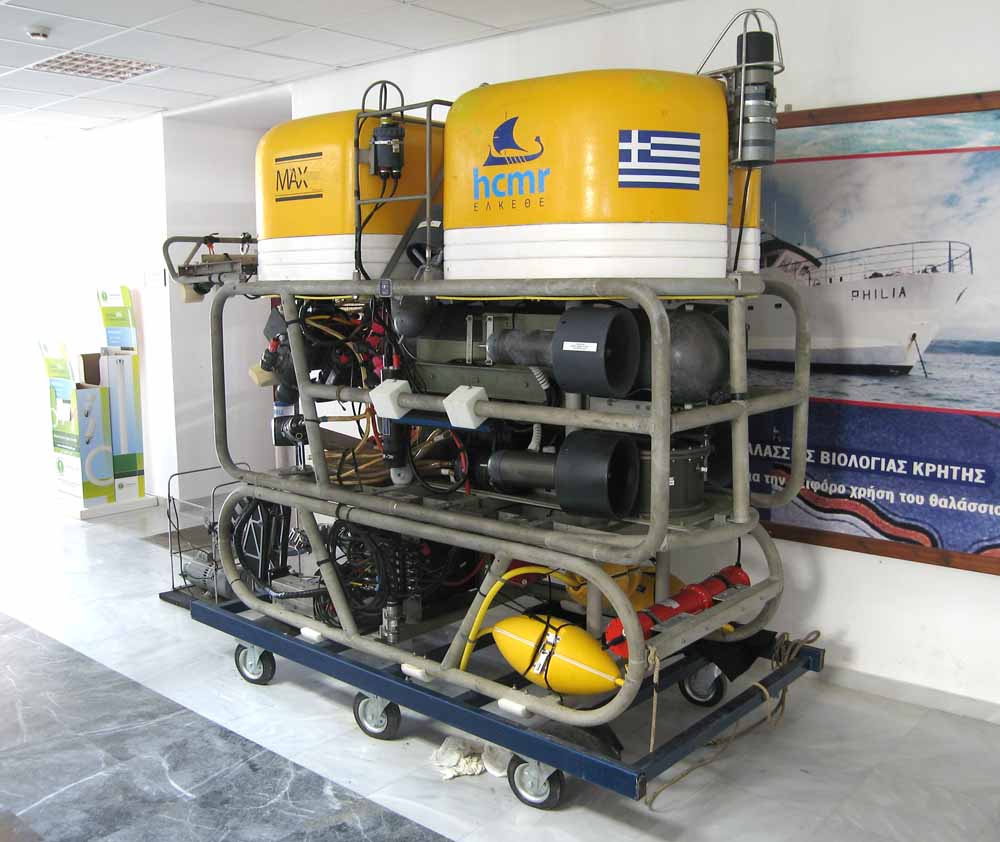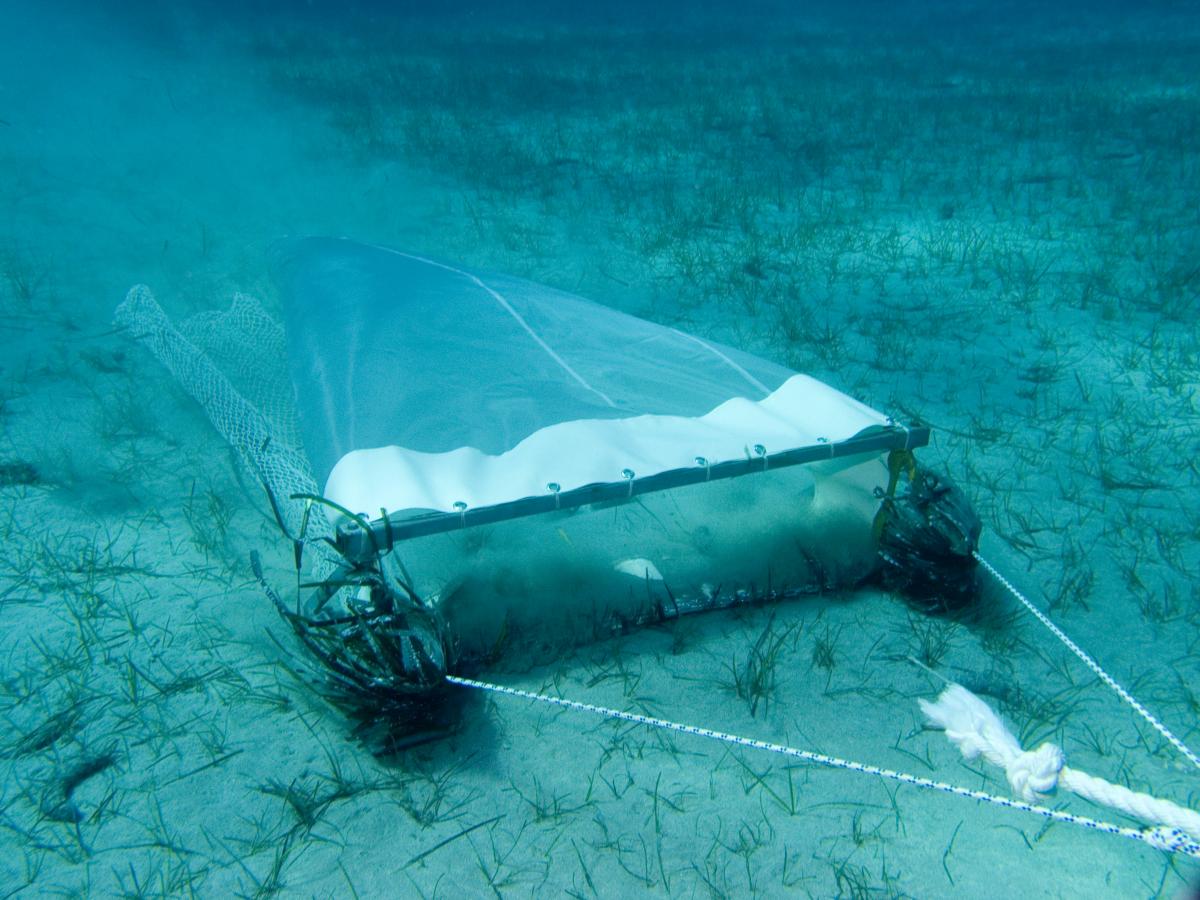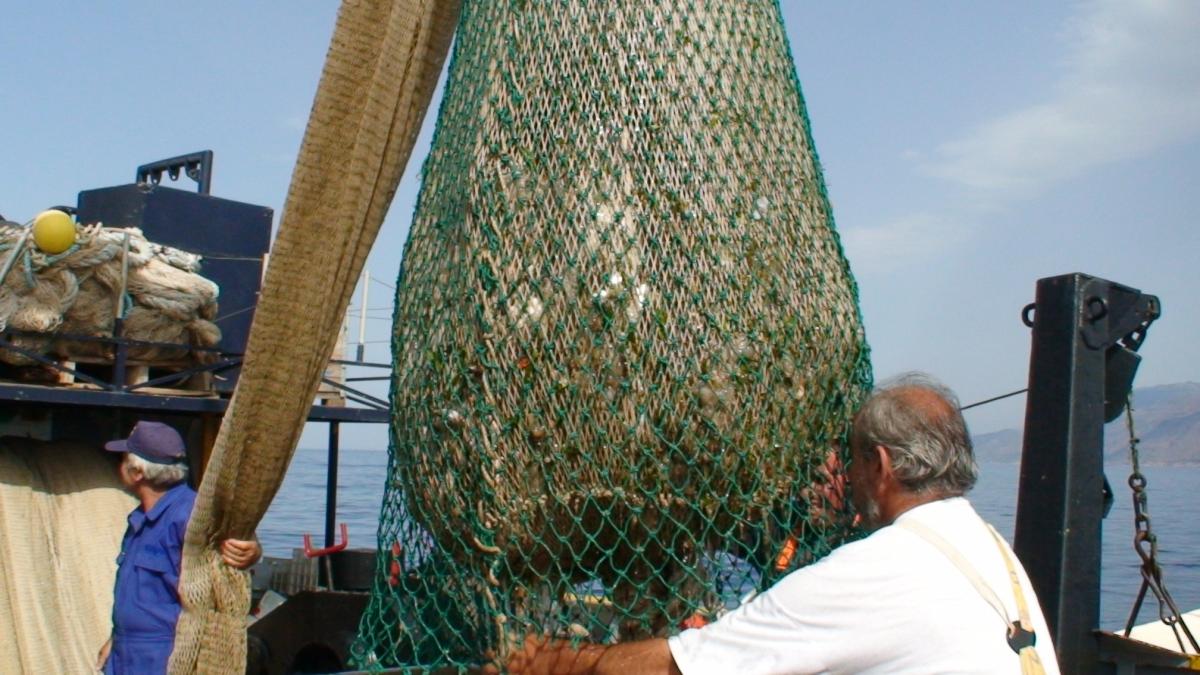The laboratories of the Department are equipped with the facilities for processing of:
a) biological material (e.g. sorting, biomass and abundance measurements, identification of species): 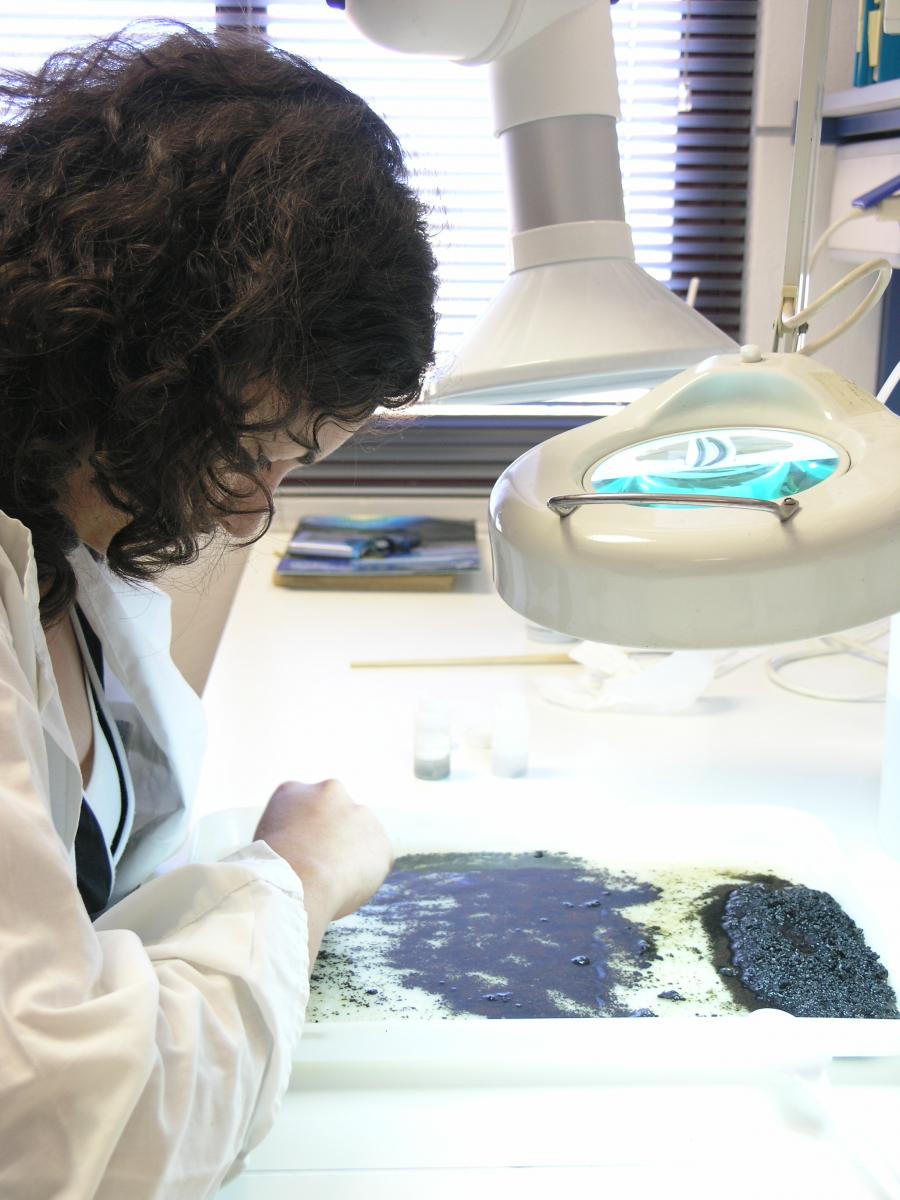
- precision balances
- stereoscopes
- light microscopes (with still and video facilities)
- rich literature containing taxonomic books and papers
b) sedimentological material:
- mechanical sieve shaker
- a large water bath for pipette analysis
- incinerators
- ovens
The laboratories are also equipped with the proper facilities for:
- underwater still and video images (underwater still cameras with a variety of lenses and lighting system, underwater housing, etc)
- Skyscan 1172 micro-computertomograph (MicroCT)
The final analysis of the obtained data is carried out using a number of multivariate techniques by means of software packages related to the analysis of environmental and ecological data (PRIMER, DECORANA, SPSS, etc) along with some packages developed within the IMBG.
The Institute has also free access to all existing large-scale structures/facilities of HCMR:
- RVs “AEGAIO” and “PHILIA”
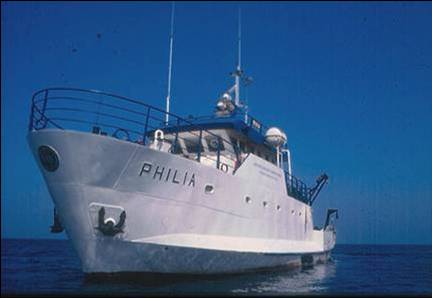
- deep sea vessel “THETIS”
- ROVs
- small crafts
- RoxAnn (mapping of the seabed)
- CTDs (measuring in situ of hydrographic parameters in the water column, e.g. PAR, temperature, salinity)
- Niskin water bottles (5l) (determination of nutrients, organic carbon and chloroplastic pigments in the water column)
- hyperbenthic sledges (sampling of BBL fauna close to the seabed and mapping of the seabed, including the upgraded BBL sampling towed sledge system
- grabs, corers (sampling of benthos in the sediment which are also used for grain size analysis of the sediment and determination of chemical parameters, e.g. organic carbon, chloroplastic pigments)
- otter trawls (sampling of demersal fish mostly for further stomach content analysis and genetic analysis)
- WP2 plankton nets (sampling of zooplankton in the water column)
- diving equipment, digital cameras and videos
The upgraded BBL sampling towed sledge system
The benthic boundary layer (BBL) supports epibenthic, hyperbenthic and zooplanktonic, mostly macrofaunal, organisms with different degrees of mobility and bottom dependence.
BBL species constitute a very important link in marine food webs as consumers of detritus particles and associate microbes, meiobenthos and plankton and as prey for demersal fish and epibenthic crustaceans, many of which are commercially important.
Nevertheless, the significance of this particular macrofauna is underestimated, especially in studies of benthic-pelagic coupling related to energy fluxes and also in holistic approaches of the marine ecosystem, mainly due to the difficulties in accessibility of this habitat.
IMBG has developed new sampling gears for the study of BBL habitat focused mainly on the sampling of macrofauna as well as the simultaneous measurement of relevant physical and biogeochemical parametres.
These methodologies will contribute towards a better understanding of the role of BBL biodiversity with respect to nutrient regeneration, carbon cycling and energy transfer to higher trophic levels.
In the framework of a European funded project coordinated by IMBG (EE/DG XIV, Study Project 1999/036) a first towed sampling gear (modified hyperbenthic sledge) has been developed for the study of physicochemical and biological parameters of the BBL habitat. Despite its successful application the system is currently upgraded in the framework of MARBIGEN program (FP7-REGPOT-2010-1).
The objectives of this IMBG research activity are:
- The study of BBL biodiversity by means of improved and modified innovative sampling gears
- The simultaneous investigation of the physical and biogeochemical processes close to the sediment-water interface in relation to BBL biodiversity
- The evaluation of the role of BBL biodiversity with respect to nutrient regeneration, carbon cycling and energy transfer to higher trophic levels
- The investigation and analysis of bottom fishing gears effects on BBL biodiversity and sediment biogeochemistry

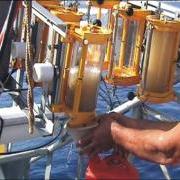
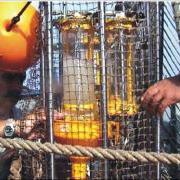
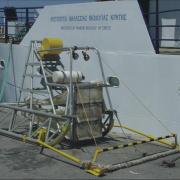
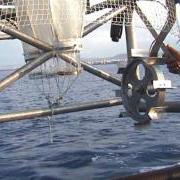
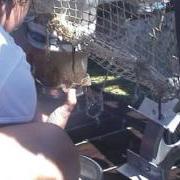
Relevant Publications
- Dounas, C.G., Davies, I.M., Hayes, P.J., Arvanitidis, C.D., Koulouri P.T., 2002. Development of a new method for the quantitative measurement of the effect of otter trawling on benthic nutrient fluxes and sediment biogeochemistry. European Commission, Study Project Number 99/036, Final Report, HCMR, Heraklion, Crete, Greece.
- Koulouri, P., 2002. Preliminary study of hyperbenthos in Heraklion Bay (Cretan Sea). Biomare, Ecological Consultancy Services (Ecoserve) Ltd, Ireland, Newsletter, 3: pp.12.
- Koulouri P., Dounas C. & A. Eleftheriou, 2003. A new apparatus for the direct measurement of otter trawling effects on the epibenthic and hyperbenthic macrofauna. Journal of the Marine Biological Association U.K., 83: 1363-1368.
- Koulouri P., Dounas C. & A. Eleftheriou, 2005. Preliminary results on the effect of otter trawling on hyperbenthic communities in Heraklion Bay (Eastern Mediterranean, Cretan Sea). American Fisheries Society Symposium, 41: 529-537.
- Dounas C., Davies I., Hayes P., Arvanitidis C. & P. Koulouri, 2005. The effect of different types of otter trawl groundrope on benthic nutrient fluxes and sediment biogeochemistry. American Fisheries Society Symposium, 41: 539-544.
- Dounas C., 2006. A new apparatus for the direct measurement of the effects of otter trawling on benthic nutrient releases. Journal of Experimental marine Biology and Ecology, 339: 251-259.
- Dounas C., Davies I., Triantafyllou G., Koulouri P., Petihakis G., Arvanitidis C., Sourlatzis G. & A. Eleftheriou, 2007. Large scale impacts of bottom trawling on shelf primary productivity. Continental Shelf Research, 27: 2198-2210.
- Koulouri P., Dounas C., Radin F. & A. Eleftheriou, 2009. Near-bottom zooplankton in the continental shelf and upper slope of Heraklion Bay (Crete, Greece, Eastern Mediterranean): observations on vertical distribution patterns. Journal of Plankton Research, 31 (7): 753-762.
Conference Presentations
- Koulouri P., Dounas C. & A. Eleftheriou, 2002. Preliminary results on the effect of otter trawling on hyperbenthic communities in Heraklion Bay (Eastern Mediterranean, Cretan Sea). Symposium on Effects of Fishing Activities on Benthic Habitats: Linking Geology, Biology, Socioeconomics, and Management (organized by USGS, NOAA, AFS and ESA), 12-14 November 2002, Tampa, Florida, USA.
- Dounas C., Davies I., Hayes P., Arvanitidis C. & P. Koulouri, 2002. The effect of different types of otter trawl groundrope on benthic nutrient fluxes and sediment biogeochemistry. Symposium on Effects of Fishing Activities on Benthic Habitats: Linking Geology, Biology, Socioeconomics, and Management (organized by USGS, NOAA, AFS and ESA), 12-14 November 2002, Tampa, Florida, USA.
- Koulouri P., Dounas C. & A. Eleftheriou, 2006. New methodologies for the study of Bottom Trawling Effects on Deep-Sea BBL habitats. 2006 Ocean Sciences Meeting (organised by AGU, ASLO and TOS), 20-24 February 2006, Honolulu, Hawaii, USA.
- Koulouri P., Arvanitidis C., Koutsoubas D., Dounas C. & A. Eleftheriou, 2011. New field methodological approaches for the study of benthic boundary layer (BBL) biodiversity. World Conference on Marine Biodiversity, 26-30 September 2011, Aberdeen, Scotland, U.K.
- Koulouri P., Dounas C., Arvanitidis C., Koutsoubas D. & A. Eleftheriou, 2012. Effects of otter trawling on benthic boundary layer (BBL) macrofauna and implications for the diet of bentho-pelagic fish species in a fishing ground of eastern Mediterranean. 6th World Fisheries Congress, 7-11 May 2012, Edinburgh, Scotland, U.K.
